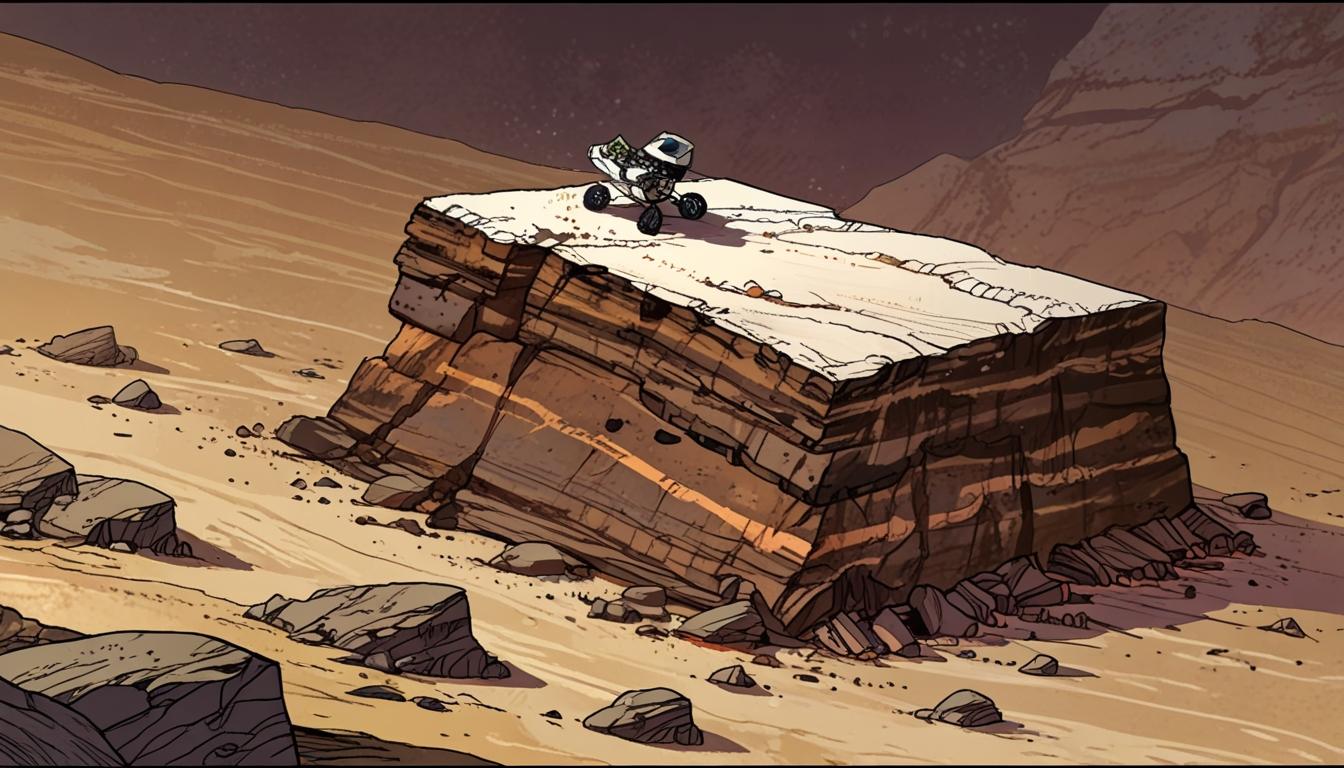NASA’s Curiosity rover has recently encountered a remarkable rock formation on the surface of Mars, which strikingly resembles a multilayered chocolate cake. This discovery was made during the rover's ongoing exploration of Gale Crater, where it has been studying the Martian surface since its landing in August 2012.
The Curiosity team faced some technical challenges in identifying a secure location on Mars for deploying the rover's APXS spectrometer and MAHLI camera instruments. After careful manoeuvring, the rover positioned the APXS equipment atop a prominent rock, enabling detailed study of a target area that includes layered formations named “Hale Telescope”, after the notable astronomical facility in San Diego, California.
Alongside the Hale Telescope site, the rover also captured and analysed another target, dubbed “Fan Palm”, located a short distance away. In total, Curiosity completed a 23-metre drive to reach these study locations, preparing for a research plan scheduled to extend over three Martian days.
Scott Van Bommel, a planetary scientist from Washington University involved with the mission, described the rock formation’s appearance in a NASA blog post. He remarked, “Perhaps it was because of Easter last weekend, perhaps I needed an early lunch, whatever the cause, I could not shake the visual parallels between the rocks in our workspace as captured in this blog’s image and a many-layered cake such as a Prinzregententorte.” Researchers noted that weathering patterns on the rock lend it the impression of a layered cake with some icing removed, enhancing its unique appearance.
This event coincides with an upgrade to Curiosity’s autonomous capabilities, as the rover recently received new AI software designed to enhance its independence in selecting scientific targets. NASA explained that the improved AEGIS instrument allows Curiosity to autonomously determine which target to examine next and carry out chemical analyses independently, marking a significant advancement in robotic space exploration.
This encounter with the “cakey” rock formation comes shortly after images from the Mars Reconnaissance Orbiter captured Curiosity traversing the Martian surface for the first time visible from orbit. The orbiter's photographs show the rover as a small dark speck leading a trail of rover tracks approximately 320 metres long.
Since arriving at Gale Crater, Curiosity has contributed extensively to our understanding of Mars’s past conditions, particularly investigating whether the planet could have supported microbial life. The rover functions as a mobile laboratory, analysing rocks, soil, and the atmosphere for chemical indicators of life and habitability.
Among Curiosity’s significant findings are evidence of ancient riverbeds, the detection of organic molecules, and indications of environments that might have been habitable in the past. The rover’s data have also shed light on the present Martian climate and radiation levels, information that will be instrumental in preparing for future human missions to Mars.
NASA continues to operate Curiosity with an emphasis on astronomical and geological research, making the most of the rover’s sophisticated instruments and recent software enhancements to advance exploration of the Red Planet.
Source: Noah Wire Services
